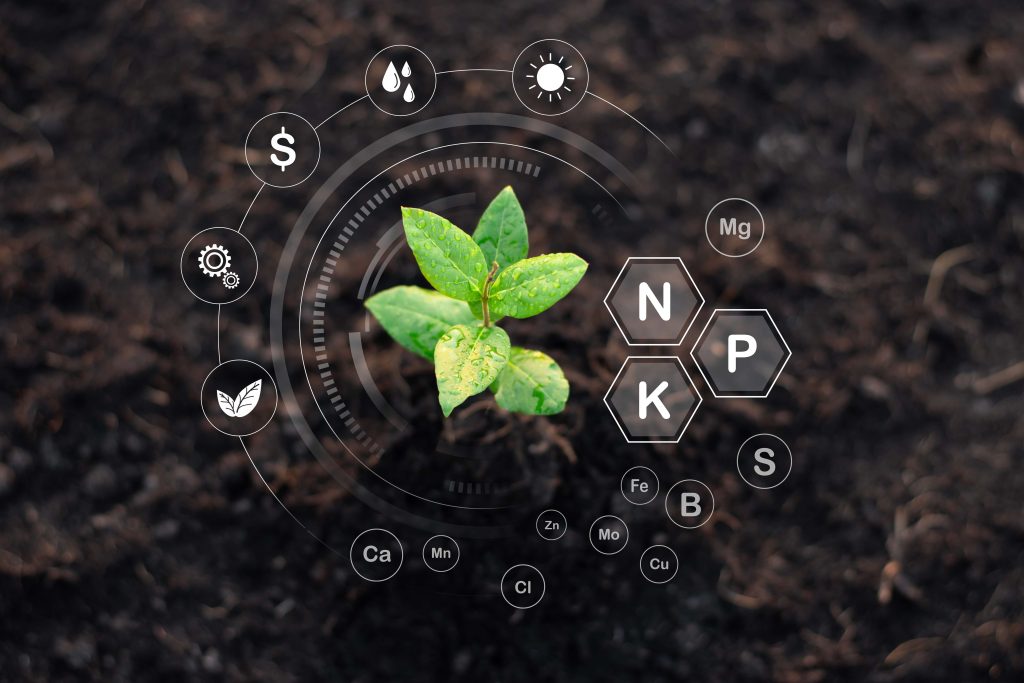HIGH-TOWER TECHNOLOGY - PIONEERING TECHNOLOGY
- Hotline: (+84) 1900 3252
- Email: contact@anhkietgroup.vn
 Plants require a range of nutrients for healthy growth. These nutrients occur naturally in the soil and can also be added in the form of fertilisers, to boost growth rates, performance, and crop yields.
Plants require a range of nutrients for healthy growth. These nutrients occur naturally in the soil and can also be added in the form of fertilisers, to boost growth rates, performance, and crop yields.
The three major nutrients that plants need are nitrogen, phosphorus, and potassium. These are referred to by the initials of their chemical symbols: N (Nitrogen), P (Phosphorus), and K (Potassium).
Fertilisers are food for plants that can be bought in concentrated and compact form such as pellets, granules, powder, or liquid. Fertilisers that contain the three major nutrients, NPK, are known by a variety of terms. These include All purpose, All round, Complete, Compound, General Purpose and Universal. There are many different brands and types of all-round fertiliser. As these ‘general’ fertilisers, there are also fertilisers for specific plants such as tomatoes and roses, etc.

Product labels carry a detailed breakdown of the three major nutrients N, P and K, always in the same order and shown as a percentage. If the numbers are the same or similar, this is a ‘balanced’ fertiliser. Where one number is higher than others (as pictured above), this means the proportion differs and the fertiliser is best used at a particular time of year. Plants need different amounts of nutrients at certain times of year, so it helps to understand what each one is used for.
Nitrogen (N) boosts leafy growth and is most needed in spring and early summer. Avoid applying a high-nitrogen fertiliser late in the season as soft leafy growth is easily damaged by frost. High nitrogen feeders include lawn food.
Phosphorus (P) promotes root development, so higher levels of phosphorus are required when planting, particularly in autumn. Bonemeal contains high levels of phosphorus.
Potassium (K) helps flowers and fruit to form and should be applied from late spring to the end of summer. A good example of a high potassium feed is a tomato feed (above) which is used to increase flower and fruit production in fruiting plants, particularly tomatoes.

When choosing fertilisers think about what you need it for. If you’re looking for a lawn feed you’ll need a high nitrogen (N) feed, if you want a bumper crop of chillies, tomatoes or aubergines, go for a high potassium (K) feed, like a tomato feed. If you’re planting and want to aid root growth then add a generous helping of bonemeal to the planting hole, which has high levels of phosphorus (P). Think also of ease of application – granular or powdered fertiliser is quick and simple to apply and usually needs only one or two applications in a growing season. Liquid or concentrated fertilisers need diluting and watering on and tend to need more frequent application.
Think also about the desired effect and the speed with which you want the fertiliser to feed your plants – liquid feeds tend to act immediately whereas pelleted fertilisers take longer to release their nutrients. Consider also whether you want organic or inorganic feeds. Fertilisers can be artificially produced (inorganic or synthetic) or based on plant or animal products (organic). Inorganic fertilisers tend to feed the plant in one application but offer no long-term benefits to the soil. Organic fertilisers not only feed the plant but they feed the soil, too, contributing to its long-term health, helping to support long-term plant growth and wildlife.

A healthy soil, particularly when regularly improved with organic matter such as compost or manure, may provide everything that plants need, although hard-working plants like vegetables and some flowering roses benefit from an additional boost in summer, particularly those growth in pots and sandy soils.
Getting the balance right is important as too much fertiliser can be as damaging as too little. Also bear in mind the potential of harm to the wider environment too, as surplus synthetic nutrients can pollute water and harm soil life.
Be aware that plants can take up nutrients only when the soil is moist, so dry conditions often result in plants showing signs of deficiency when all they really need is moisture.
As: gardenersworld.com